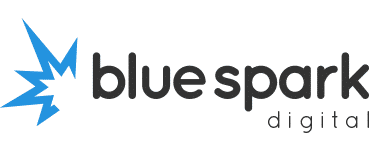The Perfect Service Page Formula (How to Write Service Pages That Actually Convert)
If your service pages feel a bit flat or you aren’t getting the enquiries you expect from them, you’re not alone. Most service pages are written like polite descriptions — they explain what a business does, but they don’t give anyone a reason to take action.
Here’s the good news: writing a service page that actually works is not complicated.
You don’t need clever marketing phrases or dramatic design changes.
You just need to understand what people are looking for when they land on a service page and give it to them in the right order.
People visit your service page because they are already interested. They just want answers to a few simple questions:
Do you actually do what I’m looking for?
Can I trust you?
How does this work?
What does it cost?
What do I do next?
That’s it. If your page answers those questions clearly, you get enquiries. If it doesn’t, they bounce.
This guide will show you exactly how to structure and write a service page that builds trust, explains your value, answers objections, and moves people to contact you — without being pushy or salesy.
I’ll give you examples, rewrites, templates and a layout you can follow even if writing isn’t your thing.
Let’s get into it.
Why Most Service Pages Don’t Work
Most service pages fail for the same boring reasons:
- They sound like generic brochures
- They explain what a service is, but not why it matters
- They use vague language that could apply to any business
- They avoid talking about pricing and scare people off
- They lack proof and trust signals
- They don’t guide people to a next step
Here’s a typical bad service page opener:
We offer a comprehensive range of professional services tailored to meet the needs of our clients. With years of experience and a commitment to quality, we deliver outstanding solutions.
That says absolutely nothing. It could be a builder, a consultant, a marketer, a dentist or a funeral director. There’s no clarity, no personality and no reason to care.
A good service page does the opposite — it speaks directly to the reader, explains how you solve their problem, builds trust, and makes working with you feel easy.
To do that, you need a clear structure.
The Service Page Structure That Works Every Time
Use this simple layout. It works because it’s built for humans, not search engines or design awards.
- Clear service headline
- Short intro that connects with the reader
- Benefits (what they actually get out of this)
- How it works
- Proof and trust
- Optional pricing guidance
- FAQs or objections handled
- Call to action
Now let’s build this step by step.
Step 1: Start With a Clear Headline
Your headline should instantly confirm that people are in the right place. Forget clever lines — be clear.
Bad headline examples:
- Professional Services
- What We Do
- Welcome to Our Services
Better:
- WordPress Website Design
- Local SEO Services
- Website Care and Support Plans
- Driveway and Patio Installation in Hampshire
- Loft Conversions for Growing Families
If your headline could appear on anyone else’s website, it isn’t strong enough.
Step 2: Write a Short, Honest Intro
This is where you speak directly to the visitor and show that you understand what they need. Keep it friendly, human and simple.
Bad intro:
We provide a wide range of website design solutions to help businesses achieve their goals. Our expert team delivers modern and responsive websites tailored to client requirements.
Too vague. Says nothing.
Better intro:
If you’re tired of having a website that looks fine but doesn’t actually bring in enquiries, you’re in the right place. I build clean, fast WordPress websites for small businesses who want something that works — not something overcomplicated.
See the difference? It speaks instead of announcing something meaningless.
Step 3: Explain Benefits Before Features
Most service pages jump straight into features:
- Fully responsive
- SEO friendly
- High performance
- Customisable layouts
That’s fine, but it doesn’t answer the reader’s real question: “Why should I care?”
Benefits connect your service to a real outcome.
Feature vs benefit examples:
| Feature | Benefit |
| Fast-loading pages | Your visitors won’t get bored and leave |
| Built with SEO best practice | You get found by more potential customers |
| Easy to update | You don’t have to keep paying someone to change small things |
| Secure build | Peace of mind knowing your site won’t get hacked |
Step 5: Add Proof So People Trust You
Nobody believes a business just because it says “quality service” or “trusted by clients”. Trust comes from evidence.
Add one or more of these to every service page:
- Short testimonial from a real client
- A measurable result
- A before-and-after example
- Recognisable clients or industries
- Years of experience
- Google review rating
Example:
I was nervous about rebuilding our site but Neil made the whole thing simple. Clear communication, fast turnaround, and we started getting enquiries within a week of launch.
Proof makes your service page believable, not salesy.
Step 6: Give Pricing Guidance (Without Scaring Anyone Off)
The biggest mistake businesses make is hiding pricing completely. You don’t have to list exact numbers, but you do need to give people enough information so they feel comfortable contacting you.
Options for pricing sections:
- From pricing
- Typical project range
- Packages
- Custom quote invitation
Examples:
Web design projects from £1,200
SEO support from £450/month
Website care plans from £50/month
Custom projects priced based on what you actually need
People don’t need an exact number to enquire — they just hate financial surprises.
Step 7: Handle Common Objections
A great service page removes doubt. Think about what causes someone to hesitate, then answer it before they overthink.
Common objections:
- How long will it take?
- What happens after I get in touch?
- Is there a contract?
- Will I own my website?
- Are there hidden fees?
- What if I already have a website?
- Do you write content too?
Handle them in simple FAQ style near the bottom of the page.
Step 8: Finish With a Clear Call to Action
This is where you guide the reader to the next step. Keep it simple, friendly and human. No pressure. No hard sell.
Example:
If you’d like a website that finally starts generating leads, let’s have a quick chat. No jargon, no pushy sales pitch — just a straightforward conversation about what you need and what it will cost.
[Book a call]
[Get a quote]
[Request a website review]
A strong call to action is confident but never desperate. Think professional invitation, not sales trap.
Service Page Template You Can Use
Here’s a layout you can copy and apply to any service page right away:
Headline
Subheadline (short, useful description)
Intro – talk about their problem and why this service matters
Benefits – explain why it’s valuable
How it works – set expectations
Proof – testimonial or results
Pricing guidance
FAQs – remove friction
Call to action
That’s it. Clean, natural and extremely effective.
Example Rewrite: Turning a Weak Page into a Strong One
Before:
We offer professional digital marketing services for clients across the UK. Our team works hard to deliver high-quality campaigns. Contact us for more information.
After:
Digital marketing that actually wins business
If you’re tired of fluffy marketing strategies that never lead to sales, I can help. I plan and run straightforward marketing campaigns for small businesses who want results they can measure, not buzzwords.
How it works: clear strategy, consistent content, and steady improvements based on real data — no gimmicks.
If you want marketing that makes sense and actually works, let’s talk.
The second version is simple, confident and human. It feels like someone real is talking. That’s how your service pages should read.
How to Write Service Pages That Don’t Sound Like AI
Here’s the truth: AI tools have made service pages worse. Everyone is publishing the same robotic copy:
“We deliver tailored solutions to meet your business needs.”
“Our team is passionate about customer satisfaction.”
“We pride ourselves on quality and professionalism.”
Delete all of that. Nobody talks like that in real life. Your service pages should sound like you talking to a real person. Here’s how to fix the tone instantly:
Write like you speak — then tidy it slightly.
Use short sentences.
Avoid jargon completely.
Stop overselling.
Be direct, not dramatic.
Example rewrite:
AI-sounding:
We specialise in providing bespoke web design solutions focused on delivering exceptional results for growing businesses.
Human-sounding:
I build clean, fast WordPress websites that actually bring in enquiries. No fuss. No nonsense. Built properly and supported long term.
If it feels awkward to say out loud, don’t write it.
Writing Tips That Convert Readers Into Enquiries
Here are simple copy techniques I use when writing service pages for clients:
Use “you” more than “we”
People care about themselves, not your company.
Instead of:
We deliver websites that are fast and reliable
Write:
You get a fast, reliable website that works exactly how you need it to
Use proof language
Avoid big claims and use grounded language.
Instead of:
We are experts
Write:
I’ve been building websites for 30 years and most of my work comes from referrals
Use confident, calm wording
Avoid sales hype.
Instead of:
This will transform your business forever
Write:
This will make generating enquiries a lot simpler
Show outcomes, not features
Sell the result, not the tool.
Instead of:
Includes SSL security
Write:
Your visitors feel safe using your website
SEO Without the Nonsense
Google doesn’t care if you stuff keywords into your page. Write naturally and clearly. That’s what ranks now. Here’s the simple version of service page SEO:
- Use your main keyword in your H1
Example: WordPress Website Design - Mention your service naturally in the first paragraph
- Use location if you’re a local business
Example: Web Design in Hampshire - Add related questions near the bottom (FAQs)
- Write proper content, not 200-word weak pages
That’s enough to rank most small business service pages.
Final Service Page Checklist
Use this before you publish:
- Does the headline say exactly what you do?
- Would a stranger understand your offer in 10 seconds?
- Does the page speak to the reader, not about you?
- Are benefits clear, not just features?
- Is your process simple to understand?
- Do you include real proof or testimonials?
- Do you mention price guidance to build trust?
- Do you remove hesitation with helpful FAQs?
- Is there a clear next step?
If you fix these, your service pages will convert better.
Want Me to Review Your Service Page?
If you want help improving your service pages, I’m happy to take a quick look and point you in the right direction.
I offer a free 15-minute service page review where I’ll:
- Tell you what’s working and what isn’t
- Show you exactly where enquiries are being lost
- Give you quick fixes you can apply today
- No waffle. No sales pitch. Just straight, useful feedback
If that would help, you can book a slot here: – Book a 15 minute review call




